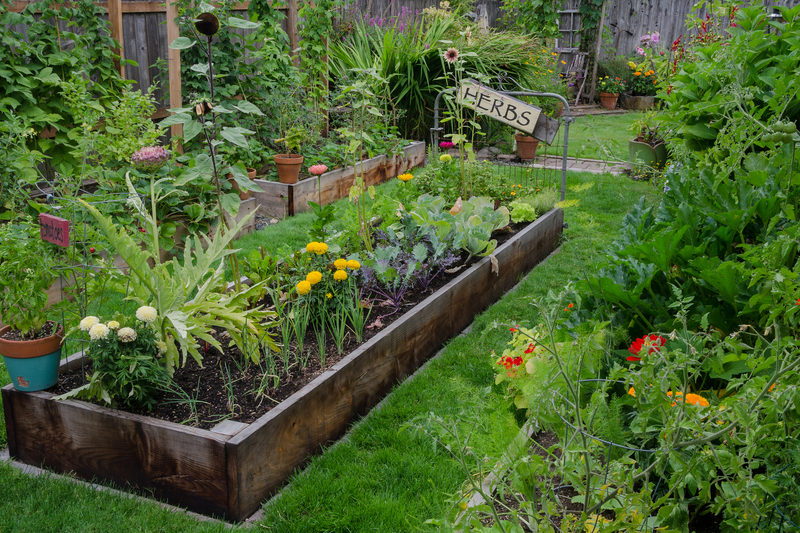Preventing Summer Drought Damage: Smart Strategies for Your Lawn
Maintaining a lush, healthy lawn during the scorching summer months can challenge even the most enthusiastic gardeners. Drought conditions can stress turfgrass, leading to thinning, browning, and potentially irreversible damage. However, with knowledge and proper care, you can prevent summer drought damage and keep your landscape vibrant all season long. This comprehensive guide explains effective strategies for protecting your lawn from drought, including watering methods, soil health management, grass selection, and more.
Understanding Summer Lawn Drought
A summer drought is defined by prolonged periods of hot, dry weather and reduced rainfall, causing insufficient soil moisture for most grass types. Lawns suffer under these conditions unless adequate precautions are taken. Drought stress manifests as wilting, fading color, slowed growth, and even bare patches.
- Most cool-season grasses (e.g., Kentucky bluegrass, fescues, ryegrass) are most vulnerable during summer's high heat.
- Warm-season grasses (e.g., Bermuda, Zoysia, St. Augustine) tolerate higher temperatures but can still be affected by prolonged dryness.
Recognizing early symptoms and acting proactively is essential to minimize drought stress on your lawn and avoid expensive repairs.

Best Practices to Prevent Summer Drought Lawn Damage
1. Deep and Infrequent Watering
One of the most effective lawn drought prevention strategies is to water deeply but less often. This technique encourages roots to grow downward, seeking moisture stored deeper in the soil, making your grass more resilient against dry spells.
- Water your lawn early in the morning (before 9 a.m.) to reduce evaporation losses.
- Apply 1 to 1.5 inches of water per week, either through rainfall or irrigation, spread over one or two sessions.
- Use a rain gauge or small tuna cans placed in the yard to monitor how much water your grass actually receives.
- If local water restrictions are in effect, prioritize watering problem areas, such as high-traffic spots or slopes.
2. Smart Mowing Techniques
Proper mowing preserves moisture and reduces heat stress on your lawn during summer droughts. Consider these mowing smart strategies:
- Raise your mower blade and cut grass no shorter than 3 inches for cool-season varieties and 2 inches for warm-season types.
- Never remove more than one-third of the grass blade in a single mowing session.
- Keep mower blades sharp to avoid tearing--which makes grass more susceptible to disease and drought.
Longer grass blades shade the soil, reducing evaporation and keeping the ground cooler, which helps maintain lawn moisture during summer.
3. Improve Your Soil Health
Healthy soil is the foundation for a drought-resistant lawn. Soils rich in organic matter absorb and hold onto water better while promoting robust root growth.
- Test your soil every 2-3 years to check pH, nutrients, and organic content.
- Add compost, aged manure, or other organic matter to increase water retention and beneficial microbe activity.
- Core aeration in spring or fall helps break up soil compaction and improve air/water movement down to the roots.
- Topdress with a thin layer of compost (no more than 1/4 inch) after aeration to further boost moisture-holding capacity.
4. Use Mulch and Grass Clippings
Applying organic mulch--or leaving grass clippings on the lawn--offers valuable protection against summer dryness damage in grass.
- Mulch insulates the ground surface, reducing water evaporation and preventing soil temperature spikes.
- Grass clippings returned via a mulching mower recycle nutrients and help retain surface moisture (known as "grasscycling").
- For flowerbeds or tree rings near your lawn, apply organic mulch (e.g., shredded bark, straw) to extend benefits to adjoining turfgrass.
Remember: Always ensure any mulch layer is thin enough to let water penetrate but thick enough to provide coverage.
5. Pick Drought-Resistant Grass Varieties
Selecting the right type of turf is critical in areas susceptible to recurring summer drought. Some grasses require less water and naturally withstand dry periods better than others.
- For cool-season lawns: Tall fescue and fine fescue are known for their drought tolerance.
- For warm-season lawns: Bermuda grass, Buffalo grass, and Zoysia grass are excellent options.
- Consider blends or mixes to improve overall drought resilience.
If you plan on reseeding or starting a new lawn, consult a local turf specialist for recommendations suited to your region's climate and typical rainfall patterns.
6. Fertilize Carefully
Fertilization can help turf recover from early stress but requires caution. Overfertilizing, especially with high-nitrogen products, can increase drought vulnerability.
- Apply fertilizer in spring or early fall instead of summer; avoid feeding during peak heat and drought conditions.
- Choose slow-release fertilizers that won't force excessive top-growth at the expense of roots.
- Always follow application rates and irrigate lightly after applying fertilizer to avoid burning your grass.
7. Manage Foot Traffic
Compacted, frequently trampled lawns are more likely to suffer from drought because water cannot move freely to the roots.
- Restrict heavy play or equipment on your lawn during drought, especially when grass is dormant or wilting.
- Install stepping stones or paths where regular travel is necessary to minimize turf stress.
- Rotate playground equipment or outdoor furniture to prevent damage from excessive pressure in one area.
Signs of Drought Stress & How to Respond
Early Warning Signals
- Grass blades turn bluish-gray or appear dull and lifeless
- Footprints or mower tracks remain visible long after passing
- Patches begin to wilt or roll inward
- Browning or thinning begins in sunny/"high spot" areas
What to Do if Your Lawn Shows Drought Stress
- Water immediately in the early morning if permitted, focusing on the stressed areas.
- Avoid mowing or fertilizing until the lawn starts to green up again.
- Reduce foot traffic and let your grass recover before resuming regular activities or maintenance.
*If drought persists and local restrictions prevent watering, allow your lawn to go dormant rather than trying to "green it up". Most grasses can survive 4-6 weeks of dormancy and will naturally revive with rainfall and cooler temperatures.
Long-Term Solutions for Protecting Your Lawn from Drought
- Install an efficient irrigation system: Drip systems, smart sprinklers, and rain sensors optimize water use, protecting against both drought and waste.
- Landscape for water conservation: Consider reducing the size of your lawn, incorporating drought-tolerant ornamental plants, or using hardscape features in less-used areas.
- Practice xeriscaping: This method focuses on selecting plants and grasses suited to your local climate, greatly minimizing the need for supplemental watering in hot weather.
Environmental Benefits of Drought-Resistant Lawn Care
Using summer drought prevention techniques for your lawn yields more than just a beautiful yard. Among the important environmental payoffs:
- Reduces municipal and household water demand during peak use months
- Prevents fertilizer and pesticide runoff, improving water quality in local streams and rivers
- Promotes biodiversity--native and drought-tolerant grasses support pollinators and beneficial insects

Frequently Asked Questions About Summer Lawn Drought
How can I tell if my lawn is dormant or dead?
Dormant grass will feel dry and brittle but remains anchored and eventually revives with water. Dead grass pulls out easily and bare spots remain. If in doubt, monitor for green shoots after rainfall or irrigation.
Should I water my lawn every day during summer?
No. Frequent, shallow watering encourages weak roots and increases your lawn's susceptibility to heat and drought. Instead, water deeply and less often.
Is it okay to mow brown or dormant grass?
Avoid mowing whenever possible when grass is brown, stressed, or dormant. If mowing is necessary, set your blade high and never cut more than one-third at a time.
What grass is best for drought-prone lawns?
Drought-resistant varieties such as Tall fescue, Bermuda grass, Buffalo grass, and Zoysia grass excel in areas with regular summer drought. Match your selection to your climate zone for best results.
Conclusion: Smart Strategies for Preventing Summer Drought Damage on Your Lawn
Protecting your lawn against the impact of summer drought is an achievable goal with the right knowledge and a proactive approach. By focusing on deep watering, healthy soil management, careful mowing, mulching, and choosing resilient turf types, you'll set the foundation for a yard that thrives--even in the heat of July and August.
Implement these smart, sustainable lawn care practices to conserve resources, save money, and ensure a green, healthy landscape--regardless of what Mother Nature throws your way!
- Monitor your lawn's needs and adjust your maintenance accordingly
- Invest in soil improvement and choose the right turf for your region
- Water wisely--and less often--for the deepest, most drought-resistant roots
- Be patient: a little care goes a long way toward preventing summer drought damage
With these expert tips, you can enjoy a lush, resilient lawn all summer long--even when the heat is on!



